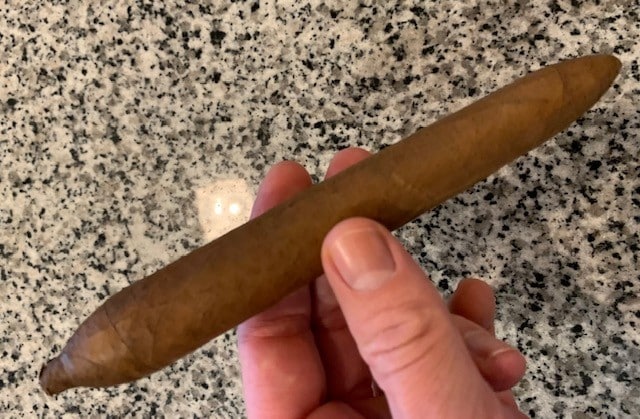What’s the difference in the physical look of cigars when comparing one with another? The question is more common than you might think. To the novice, all cigars look the same. They are long, cylindrical, and rounded at one end, and flat at the other. This most common and simplest cigar construction is called a parejo. However, if you’ve been part of the cigar lifestyle for a while, then you probably know the term figurado. These cigars deviate from traditional shapes. Their construction is more complex. So, how do you tell the difference among cigars when you’re new to cigar lifestyle? We’ll break it down for you. Here’s everything you need to know about figurado cigars, and why you should try one of them the next time you light up.
Figurado Cigars Come In Many Shapes
Figurado cigars are not rolled in the traditional style of the parejo. Most have tapered ends and some contain oblong bulges with more binder and fill. The most common figurados are the Pyramid, Torpedo, Belicoso, and, of course, the Perfecto.
Pyramids and Torpedoes
These two styles appear similar, and they are similar in length and ring gauge. However, the traditional pyramid has a slightly thicker foot that tapers to the pointed cap. A torpedo is shaped like a conventional parejo (think of a traditional Toro), but like the pyramid, a torpedo tapers at the head.
Belicosos
Belicoso cigars are the smallest figurado, about the size of Robusto. It’s easy to mistake these for a parejo. Many cigar enthusiasts view Belicoso cigars as a kind of hybrid because the tapering at the head is softer and more rounded.
Perfecto
Perhaps the most distinct of the figurado cigar shapes are the perfecto. These smokes feature a tapered foot and a conic head. At first glance, a novice might not know which end to light. However, cigar aficionados and seasoned smokers know that many Perfecto cigars, like the Arturo Fuente Hemingway line, are rolled with a tiny nub or nipple at the foot. This makes for easy lighting.
The Quality and Complexity of Figurado Cigars
So what’s all the fuss about? There’s a good reason those figurado cigars often come with a higher price tag. Remember, cigar rolling is an art form, and figurados have a far more intricate construction than parejos.
Only master rollers craft figurado cigars. Since it takes about 10 years to become a master, these cigar rollers earn the distinction through experience, rolling, and through their ability to blend and bunch the tobacco. The irregular shapes and variation of size throughout the body of the cigar also make them more difficult to roll.
It’s not just the construction that makes these cigars top-shelf. It’s the complexity of the taste. A cigar is composed of three parts: filler, binder, and exterior wrapper. When you smoke a Perfecto, for instance, the first few draws contain mostly flavor from the exterior wrapper. As you smoke the thicker sections of the cigar, you’ll taste more of the filler and binder. Finally, when the cigar tapers toward the end, the balance and blend of all three tobaccos emerge. Some smokers refer to this as a “turn.” A figurado cigar can contain several turns. Whatever you want to call it, figurados are best savored all the way to the nub.
Cutting and Lighting a Figurado Cigar
Obviously, the tapered ends of torpedoes and perfectos rule out using a punch. Those finely constructed tapered heads deliver a tighter more concentrated draw than a parejo. You can use a v-cutter, but a straight cutter works best. Be careful not to cut too deep into the tapered cap. Remember, experiencing the varying flavors as the cigar reaches its end is one of the best part of enjoying a figurado cigar.
Don’t worry about how to light most figurados. Torpedoes, Pyramids, and Belicoso cigars usually have a traditional foot like any parejo. However, don’t make the mistake of torching the fat end of perfecto! The tiny knob at the end is all you need to light. The draw may be slow at first, but be patient. Enjoy the first surge of flavor, and kick back for a dynamic smoking experience.
Photo credit: Cigar Life Guy


